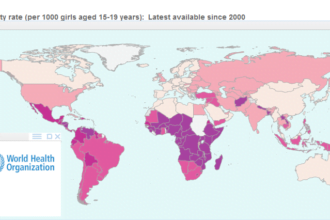Infectious diseases are very common in the workplace. Up to 20% of Americans get the flu each year and many get sick at work. Employees miss around 17 million workdays from the flu each year.
Unfortunately, there are other risks associated with infectious diseases. You could be at risk of a lawsuit if you don’t take adequate steps to protect your employees. Over 1,000 lawsuits were filed by employees over Covid-19.
Important Steps for Minimizing Liability from Infectious Diseases in the Workplace
Here are some steps that you should take to minimize your legal liability for infectious diseases. You can also get employers’ liability insurance as a precaution.
Implement a Policy for Sick Employees
The company should make an effort to clearly communicate that a policy that individuals with flu-like symptoms should not come or stay at work and should not return to the facility before the end of the estimated contagious period. This is usually 7 days for the flu, but could be longer for other illnesses. They need to understand that fighting the infection starts with them.
It should also convey a clear message to all staff about what to do in case of family care, transportation problems and other issues.
Delegate Infection Control Responsibilities
The next step is to set up a infection control team in the workplace. In very small sites, this group should be composed of the employer and the personnel representative. In large companies, a joint group should be set up, with representation from the company and trade unions. This group should be advised by the Prevention Service and documented through the internet to follow the guidelines of the competent authorities (see links below).
Immediately adopt a plan to implement general hygiene measures with provisions on cleanliness of premises, waste and waste management, hand cleaning practices and devices required for this and other risk control measures. You should disseminate information to all staff and potential visitors or the public. They must realize that the overall threat of the flu and other illnesses is worse than ebola.
Assess the Risk
You must estimate the level of risk of the various activities carried out by both onsite and offsite workers, according to the degree of risk of contagion in the workplace according to the following classification of the degree of exposure:
- Occupations with low risk level. There is no risk derived from the work activity. Tasks that do not include frequent or continuous attention to the public.
- Occupations with medium risk. These are occupations that require frequent contact at less than one meter with presumably unaffected people (co-workers, general public and students).
- Occupations with high risk. These are occupations with contact with people diagnosed or with suspected disease (example: health personnel and emergency transport of people with suspected disease).
- Very high-risk occupations. These are occupations with high exposure to viruses in the context of health or laboratory procedures (such as those involving the generation of aerosols -intubation, resuscitation, etc.- taking respiratory samples and dental procedures).
You should identify tasks that can be managed from home (such as with remote work) and assess the work trips that can be reduced. If some of the company’s services can be classified as 3 or 4 according to the above classification, the risk must be assessed and specific prevention plans drawn up. It can also be consulted if there are specific guidelines for action in certain sectors (see, for example, in the MSPS).
If there are particularly sensitive groups of people (pregnant workers, infants, people with specific pathologies that may aggravate the prognosis of an influenza process), the measures to protect them should be specified in the plan.
Negotiate expectations and plan
The company must negotiate with the workers’ representatives when making the planned transitional changes in the organization of work. To this end, the following should be considered:
- Need for specific resources for the implementation of the plan.
- Organizational measures, such as the possibility of remote working.
- Consideration should be given to how absences due to sick leave will be replaced.
- Hiring of workers.
- Multi-functionality and its remuneration.
- The impact of caring for dependents should be assessed, as well as how the days will be paid, whether they can be made up, etc.
- Adopting a timetable and approach to different degrees of severity.
- Mechanism for deciding on the implementation and completion of the specific plan.
- Decision-making, identification of responsibilities (task managers, etc.) Replacement of persons in the event of absenteeism.
Training and communicating the infectious disease control plan
The plan will be aimed toward all stakeholders including the company’s own and external workers, subcontractors, collaborating companies and, where appropriate, clients and visitors. The company must make a special effort to convey its message well and, in particular, to dissuade workers who unduly believe that it is their obligation to attend the workplace if they are not too ill.
It should be remembered that people who have been in contact with a flu patient in the previous 7 days can come to work but should carefully monitor their health in case flu-like symptoms appear.










